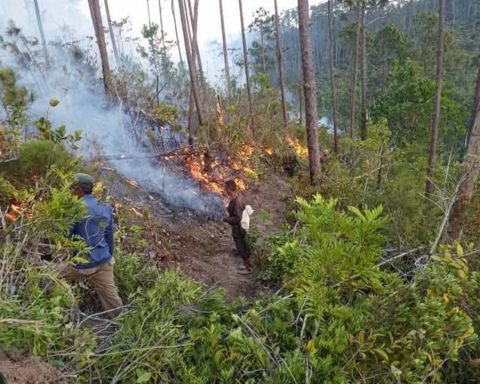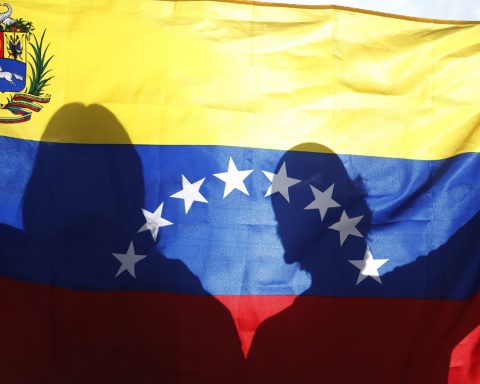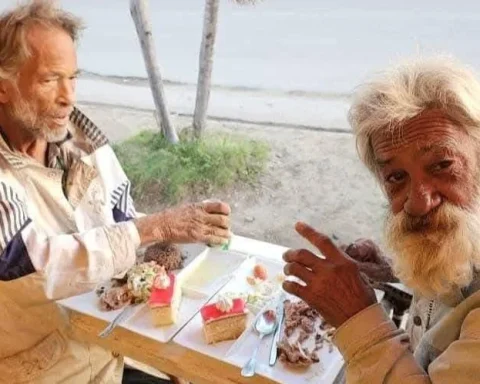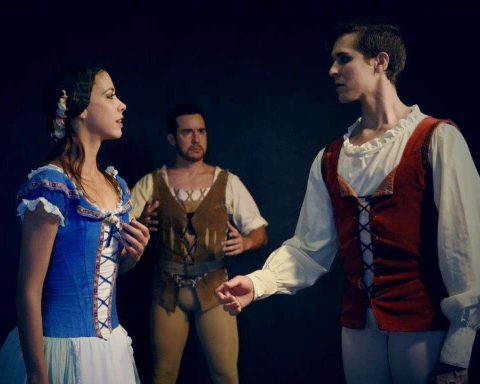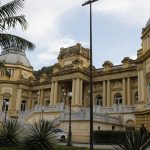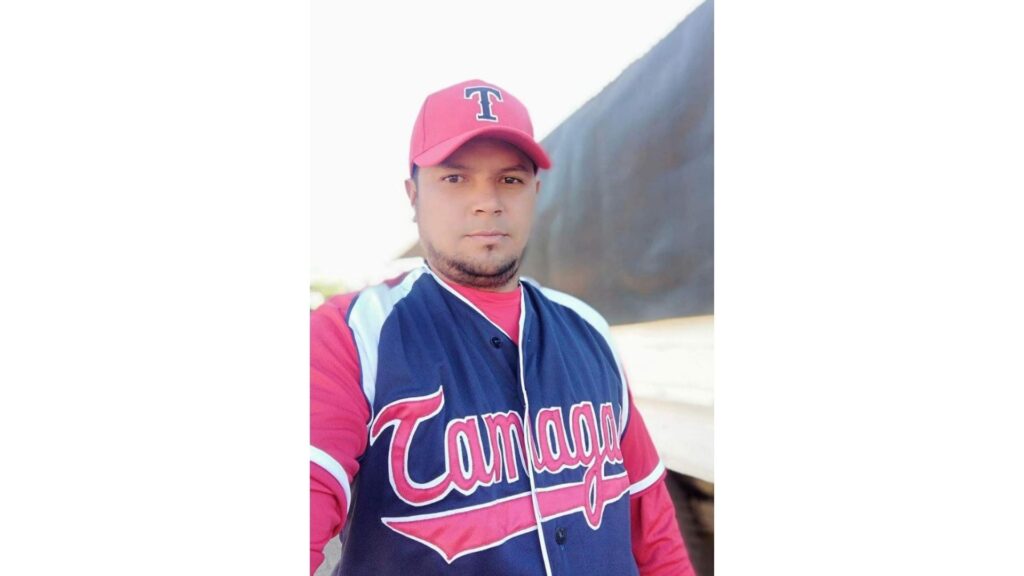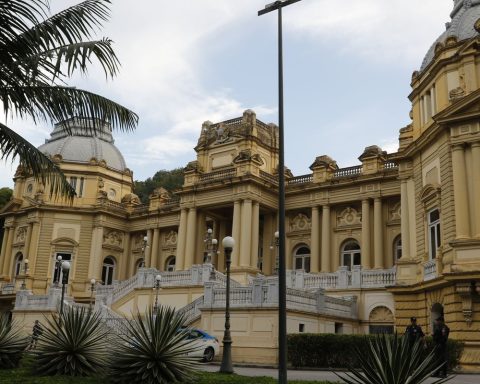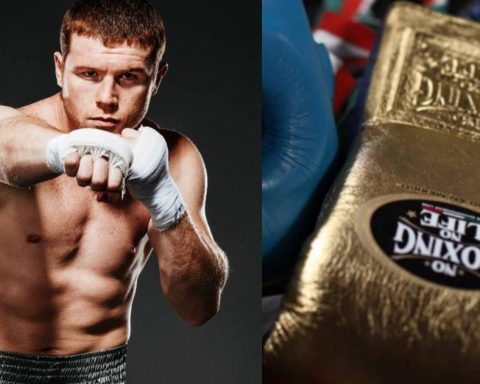While presenting an exquisite phonogram, which pays homage to the entire tradition of which he feels heir and part, the first thing Orlando “Maraca” Valle does is thank:
«I am very grateful for the opportunity to continue this path of the flute, which began more than forty thousand years ago in the south of Germany in a cave, where it was the first time that a musical instrument was perceived. And in the case of Cuba, where the wooden flute was first played, but it was evolving and it is an instrument that encourages, that communicates, and later there have been excellent flutists, creators not only in the flute, but in Cuban music throughout your extension”.
—Is that about that fluteto pay tribute to the history of the instrument in Cuba?
—The flute did not stop, it did not stay in the 20th century, and that is what this DVD is about: to pay homage to the flutists, to the instrument, but above all also to mark the path to follow, to try to explain a bit our vision of the flute, where are you going?
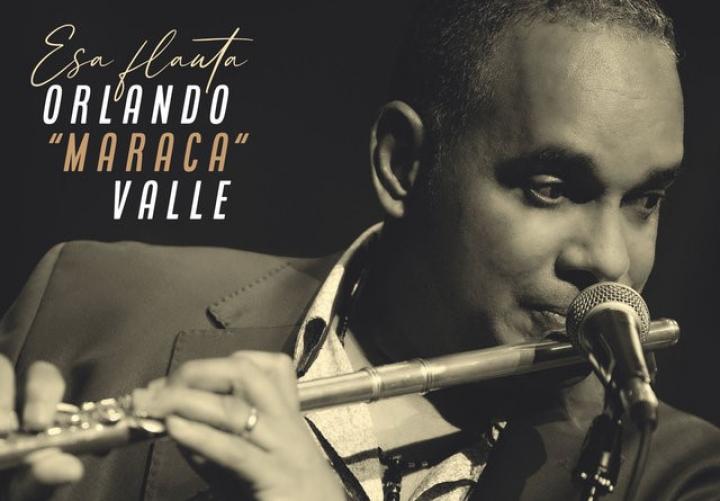
—And from your own experience, what would that path be?
“The road is everything. The flute is a magical instrument, but sometimes it gets pigeonholed. What’s going on? I come from Párraga, where there was Santería; there is the Church of Santa Bárbara, where Celina González used to sing; and there was a lot of Afro-Cuban stuff: batá, rumba, conga, comparsa, there was everything there; It is a very black place, very African. My dad would put on a program on Radio Progreso on Sundays where Aragón was on and there I was permeated by Aragón playing charanga; It was live, there was nothing recorded there. On television it was charanga, charanga and charanga. Then I studied classical music at school. In the middle level, in the Amadeo was the headquarters of the National Concert Band, who were some old men who played super, but they were already 70, 80 years old. So I said: I don’t want that, nor do I want to be a charanguero.
«I began to hear other influences, I began to know that there was a very important movement of incredible flutists in Brazil, in jazz too, I didn’t know that existed. I began to discover things that were no longer classical music, nor was it Párraga’s rumba. So I began to mix all that, plus what I experienced later with Irakere, with Chucho Valdés, with Emiliano Salvador the pianist, with Frank Emilio and his friends, Bobby Carcassés, Changuito, Tito Puentes…
«Life led me down paths that led me to meet and record and play with flutists from many places, and the flute became a whole, that is, it has percussion, it has a tres; I like the tres, I love the cadence of the son, that of the changui, the music that is made in North Africa, the one that is made in various regions of Africa. I have collections of records of that and things that I have experienced. So that made me a different flutist. He caused me to be called “The liberator of the flute” in the United States, because I didn’t want to be just another charanguero like the ones I saw on television, nor to be a member of the National Concert Band. And he said: well, how do I do it? And I began to see José Luis Cortés, el Tosco, who began to introduce things that were not typical from here and I said: look how interesting, he plays differently from the charangueros. And I began to investigate and look for people from abroad who played differently, that is, the flutists here had a lot of rhythm and a lot of flavor, they sounded very Cuban, it seemed that you were hearing a mockingbird — that’s what Frank Emilio’s wife told me: the Cuban mockingbird —; the ones from there had a lot of swing, but no flavor, and the ones from here had a lot of flavor and no swing. So I said: there is a contradiction here, there is an enormous distance between two worlds that I adore».
—And then the way was to unite them…
—I was forced to join them because, furthermore, the flute was prohibited in quotation marks: in the ensemble formats there were four trumpets, Chapotín, Arsenio Rodríguez, Roberto Faz and millions; there was no flute, ever. I had no right to play there, that is, I had no perspective, however, I had a melodic line to play there. I had melody lines to play in one jazz-band. If I proposed myself to play in a jazz-band, they told me: what saxophone do you play? I’m not interested in playing saxophone. I play flute, not saxophone. I am not a flutist who plays saxophone, I am a flutist who plays flute. I had no space.
«Then I began to write the music myself, I developed myself to compose and began to make music, my first albums prove it. That’s how I started playing flute in ensembles, flute in jazz-band. So I released the flute a little, and from then on a current has been weaving, not only with me, but with others as well, until a moment came when some records really hit, they were nominated for a Grammy, they won movie awards with films like a man apartwhere Vin Diesel works, the one from Fast and Furious; That movie is very famous all over the world. I had an American record label for years in Los Angeles and they put that music in an Australian movie, but it sold Hollywood, and where it said: “Blow, Maraca”; then comments came: “hey, you recorded a really good thing with Oscar de León”. No, that’s with my group in Cuba, but they thought it was outside. All this went a long way and made it possible for me to get to know and also place myself at levels of acceptance».
—That flute «with flavor and swing» is the one we are going to find on this album?
—You are going to find a little bit, that is, there is nothing absolute, just like medicine, where two times two is not four, in music it is the same. This is not an encyclopedia; in fact, “other flutes” would have to be made, other records, other DVDs, because, furthermore, the flute is not me at all. I am one more in a chain of flutists who, thanks to them, we have been respected in the world. I know about 65 countries, with Irakere I traveled half the world and with my group I have also been to remote places, and wherever the Cuban flute is known, and where it was not known, it was presented and liked. The Cuban flute has a strength, Cuban music has a strength, an identity, that we cannot lose. You have to try to connect young people with that.
—And how to achieve that connection?
—I believe that there are intelligent ways to connect them, just as I connected myself when I was young. I have read in some books that in the 1920s, which have nothing to do with our current reality, the folk troop, which was the fashionable American rhythm, permeated Cuban music and destroyed the presence of the timbal in the danzón; people didn’t even know what to do: well, shall we do a danzón with American drums? Even the son kind of staggered because other rhythms sounded. There are formulas for that, like the ones I experienced when I was little, that the television program existed To dancewhich connected us with prizes, competition, stimulation of young people, and from then on I connected with the danzón, with the mambo, the chachachá, and it helped me start a career studying that music.
—Perhaps closer to elementary music schools…
—That’s what I’ve always wanted, even in general schools. I think that music, ballet, visual arts, art in general and many aspects of culture, of history, should be given another approach and interact with children. As simple as, for example, the series Calendar, which has actors and actresses who communicate very well. If they take them to schools so that they explain about these issues, they will surely listen to them, and in the future we will have people who are more connected, more Cuban, and who know their country better, the culture of their country. I am available, I have offered and I hope they call me to do so.
—Maraca, what does the flute mean to you?
—The flute is an instrument established as a classic, that is, you go looking and you have Mozart concerts, you have impressionism, romanticism, baroque, contemporary, all the styles there have been and will have, there are millions of composers, millions of famous flutists, but my story is particular because, first, I did not seek to study the flute. They didn’t impose it on me, they recommended it to me and I accepted it, a 10-year-old boy.
«In the end it is a pretext, a connection, a tool to be able to express yourself, to be able to sing, to say what you think is happening, what you feel. That is the flute for me, a tool that has helped me to communicate with many people. In some places I have been and there have been thousands and thousands of people. With Silvio in the National Stadium of Chile there were no less than 80 thousand people, and there I was playing the flute. In other places there have been 20,000, 30,000, I don’t know how many thousands, who react to something that does not speak, but sounds, and it is the primary sense of the human being, we first sound and then speak, and the first thing that is discovered that there was a flute, so we come from there with that…»
—The CD + DVD that flute It has several themes dedicated to important Cuban instrumentalists and covers various genres of our popular music. You yourself have said that it is a tribute to the Cuban flute. Is it possible to speak of a Cuban flute school? What elements distinguish it?
—Many of the elements are even extra musical. In the classes I teach I insist on that, because I have gotten a lot, with this same work, into the technical and expressive particularities of many flutists, not only in terms of the genres they defended the most. I’ve been trying to go further and see how each one played, why they played like that. So I think there is a Cuban flute school. The flute in the 19th century was important, in the 20th it was very important and in the 21st it is still important. We have to keep going, because there are flutists here like Niurka González; as Jose Luis Cortes; like Eduardo Rubio, the one from Aragón; Herrera, the wooden flutist. I would like to rescue the presence of the wooden flute in Cuba, that it not be left behind, that it not disappear, because that is our heritage and we have to defend it. I think that in the Cuban flute school there are all the ingredients to confirm it, to develop it and to continue creating.
